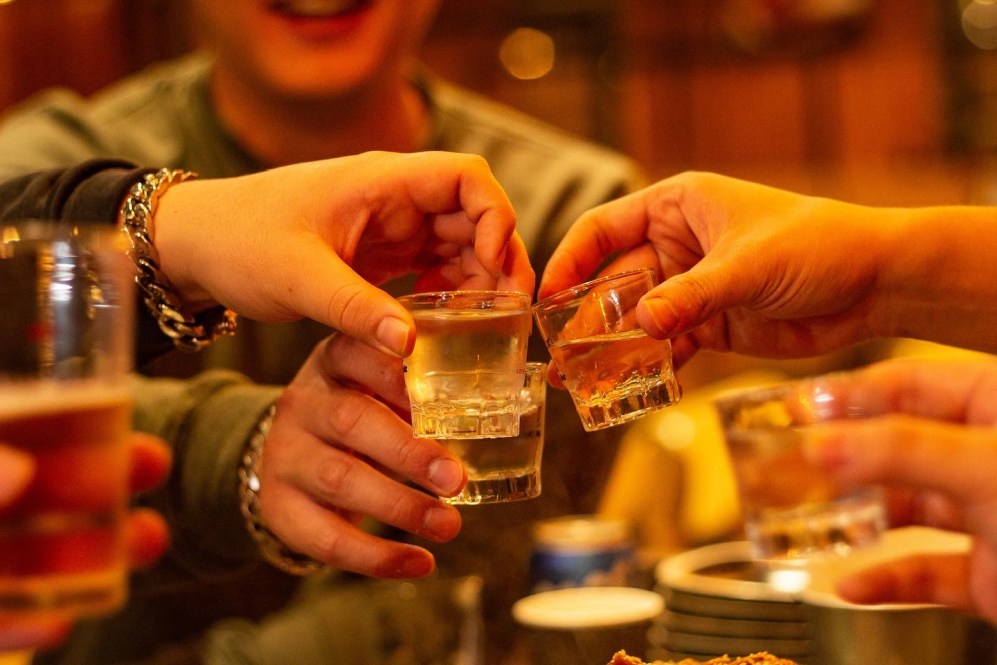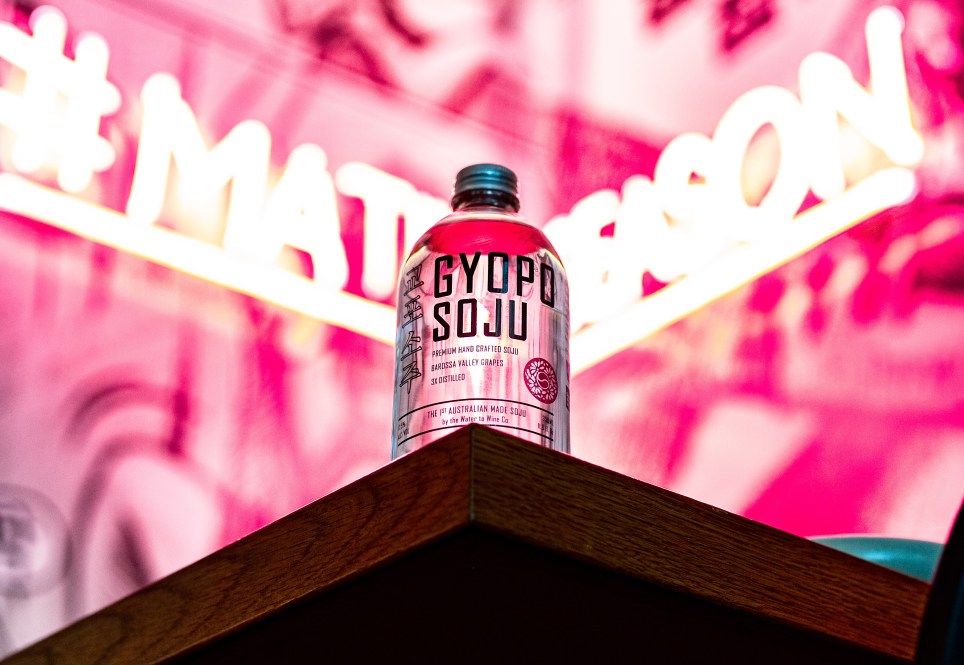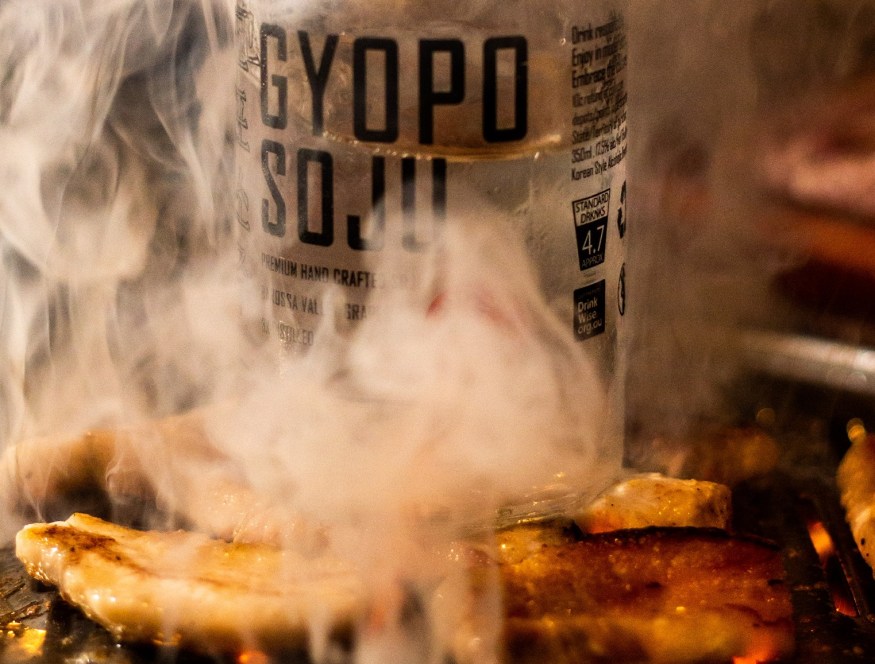When you think of soju, a green bottle likely springs to mind. And it’s no wonder, given the global market is dominated by just a handful of players. But what if the bottle was clear instead and the liquor was distilled with grapes not grains? Enter Gyopo Soju; a family business run by three siblings who have launched Australia’s very first soju.
Co-Founder David Park talks to Hospitality about creating a product that incorporates Korean culture with a local twist, the nuances of working with Barossa grapes and why the craft soju movement is just getting started.
The earliest records of Korean soju can be traced back to the Goryeo dynasty in the 14th century. The rise of the Mongol Empire essentially facilitated the transfer of soju, bringing distillation techniques from what is now known as Syria to Korea. Hit the fast-forward button, and it’s estimated adults in Korea drink 87 bottles of soju each per year, with domestic consumption continuing to rise.
Soju is ubiquitous and of immense cultural significance in Korea, but what exactly is it? Traditionally, soju is a distilled spirit made with rice, water and nuruk, a starter culture that produces alcohol during the fermentation process.
It has since gone on to evolve, with most distillers now using grain and starch alternatives such as wheat, barley, sweet potato or tapioca in place of rice, which has largely become the domain of niche craft producers. “Soju means distilled fire water if you translate it traditionally,” says David Park. “It’s generally a distilled spirit.”

David and his siblings Monica and Michael Park are second-generation Koreans from Sydney who always wanted to go into business together. The trio would travel to Korea every two years or so, and it was here where the idea for Gyopo Soju came about.
“We would go out with friends and see a lot of craft distilleries doing their own takes on soju,” says Park. “There are a lot of varieties in Korea, and we wondered why it wasn’t the case in Australia, which has maybe two brands imported in mass quantities.
“So, we decided to take things into our own hands and create something that allowed us to incorporate who we are and our culture into it. Gyopo means ‘foreigner’ and refers to a Korean national who has moved abroad as an immigrant, and it’s essentially who we are.”
While green grape is one of the most popular flavoured soju options, Gyopo decided to forgo grains for a combination of white grape varieties sourced from the Barossa instead.
“Being Australian, we wanted to incorporate something that’s really well known and easy for people to understand,” says Park. “We tested out a few different bases and found grapes and wine bring out the sweetness and aromas necessary to make it soju.”
The grapes are fermented before the distillation process begins, which also includes coconut charcoal filtration and a resting period inside copper drums. “We distil three times, which takes away the impurities and colour and results in a crisp, clean spirit that’s undeniably soju,” says Park.

“It’s quite time-consuming, but it’s necessary for getting the right flavour. There’s not much taste at the start because of the smoothness, but the back notes have sweetness and fruitiness from the grapes.”
The ABV of soju varies considerably from brand to brand, with some sitting at 16 per cent and others reaching as high as 53 per cent. “Our soju is 17.5 per cent; it’s a little stronger in terms of alcohol, but it’s cleaner,” says Park.
Unlike some sojus that are crammed with artificial flavours or additives, Gyopo’s iteration eschews such an approach, instead creating a premium product that sits in a lane of its own. “Most people drink sugary flavoured soju to get drunk at Korean restaurants,” says Park. “But Gyopo is made from grapes and is a product that’s enjoyable by the glass. It can be consumed with Korean or Australian dishes.”
That’s not to say Gyopo can’t be shotted “as Koreans normally would”, says Park, who’s partial to a shot or a slow sipper. “I put it over ice in a big cup and drink it with a meal or it goes well in cocktails with juice or Sprite,” he says. “You can also use it in a somaek with beer. We mix a shot of soju with two shots of beer and that’s how true Koreans take it.”
While Gyopo can be purchased online, the soju has been steadily increasing its presence in restaurants and bars and hopes to expand across the ditch to New Zealand and eventually, Korea. Diners and drinkers at Jane, Marble BBQ, Where’s Nick, Tokki and WonJo BBQ restaurants in Sydney will spot Gyopo on the menu, with the brand recently moving into select BWS and Dan Murphy’s stores, too.

The local drinking public’s preferences is largely anchored by beer, wine, gin and vodka, but Gyopo is out to expand the average consumer’s perception of soju and shed some light on a spirit that can be enjoyed as much as it is at Korean BBQ as it is in a fine-dining setting.
It’s a notion that can be likened to that of the global craft beer movement. And who’s to say the same trajectory can’t be followed by soju? Small-batch soju distilleries have steadily begun to increase in prevalence in Korea as well as the US, with one brand (Tokki) even making soju with glutinous rice from Chungju.
“Craft distillers in Korea are booming and the craft beverage market has been going off,” says Park. “They have a smaller capacity, but more attention to detail, and that’s what I believe differentiates them from the main players.
“The market has always revolved around three mass-produced soju brands, but Koreans love to be different and create new trends, so people are happy to pay the price for the quality and to taste something that’s not mainstream. To see that movement start has been great, and we pride ourselves on being the first to do it
in Australia.”
Sponsored Content

Posiflex ZT Series: The Game Changer
Sponsored by Goodson
Trending Now
Resources
Lorem ipsum dolor sit amet, consectetur adipiscing elit. Fusce ac ornare lectus. Sed bibendum lobortis...
Lorem ipsum dolor sit amet, consectetur adipiscing elit. Fusce ac ornare lectus. Sed bibendum lobortis...
Sign up for our newsletter

